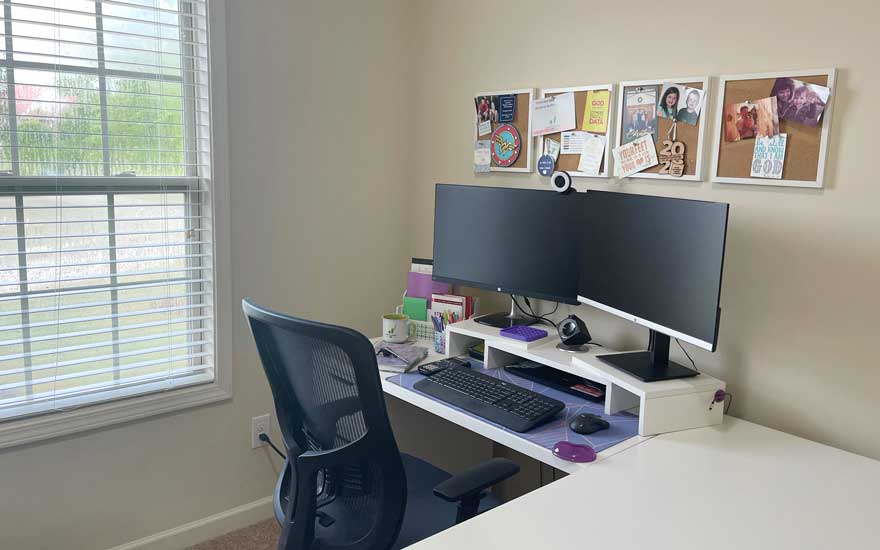It wasn’t that long ago that the typical work environment centered around a corporate office. The majority of employees came together, physically, pretty much every workday. While some companies had started to offer work from home a day or two a week (and fewer still had fully remote-based employees) many executives still had the outdated perception that if you were working from home, you were somehow not as productive as physically on-site workers.
Well, times sure have changed. Thanks in no small part to the need for social distancing these last 18 months, we have seen a rise in the remote-based worker. Out of necessity, many employers found themselves in a position that required the need to support a work from home model to keep their people safe and to ensure the company could continue to meet its business commitments.
“We believe many companies will decide to stay fully remote. Here are some of the pros and cons to consider, and the best practices that will help you set your team up for success.”
ML is a bit unique in that our entire team has worked remotely since our inception 20 years ago. We intentionally created this setup to allow us to hire the talent and expertise we needed without limiting ourselves to a localized talent pool. We typically seek… and attract… seasoned professionals with a broad depth of experience who are looking for a flexible work environment. Some are looking to accommodate an outside interest, want the ability to travel more, spend more time with children or extended family members, all while leveraging the skills they have honed over their career.
Whatever the driver, our flexible “work from anywhere” philosophy has worked for us, our clients, and our staff. We’ve had a spike in growth in 2021, having added 14 new employees to our team, and we are looking for more.
Because we’ve always been remote versus having to transition an existing workforce from an office to remote, we’ve had the benefit of always recruiting for the type of people who are attracted to remote work. And in our hiring process, we screen for the traits that we know contribute to success. For example, our candidates must all complete a written questionnaire before their first interview. The ability to express oneself effectively through writing is one of the traits that is a huge advantage when working with a remote team.
“The ability to express oneself effectively through writing is … a huge advantage when working with a remote team.”
We believe the trend toward a remote workforce is likely to continue to grow. If you decide it is the right thing for you, here are some best practices to help you set your team up for success.

If a company decides to go remote (whether it’s permanent or temporary) management must be clear in communicating the reasons why, how they plan to support the model, and what criteria may trigger a return to the office; or in the case of a permanent move to remote, advise when employees can expect opportunities to meet with co-workers in person – whether it’s a quarterly meet up, small breakouts by geography or one annual gathering.

Encourage and incentivize your employees to create a comfortable workspace that includes all the required tools, ideally separate from the main living space, preferably with a door. The setup should be ergonomically correct. And don’t forget the importance of lighting, which has a profound effect on mood and performance. And finally, make sure there is easy access to technical support in the event of technology issues that could impact productivity.

Encourage your employees to treat each day like they are going to the office. We found that requiring everyone to attend meetings on camera helped to spur a daily, “get ready for work” routine. But don’t overdo work hours! It’s tempting to work through holidays or weekends. Don’t. Studies show this can DECREASE productivity (and mental wellbeing).

This is arguably the most important component of managing an effective remote workforce. Today’s technology (including Microsoft Teams and Zoom as examples) makes it easy to connect, but you have to be intentional about your communication efforts to effectively conduct business. There’s an art to leading a successful virtual meeting. Watch our short video “How to Hold a Successful Virtual Sales Meeting” for some tips. It is also important to use the tools to have some fun and build team spirit and camaraderie. At ML, we were having virtual happy hours before they were a thing! We celebrate team member milestones and accomplishments (personal and professional). “Latte’s with Lara” virtual engagements are a chance for me to meet one on one with employees, and managers are also encouraged to spend time with their teams as a group but also individually.
The remote workforce model has been very successful for us at ML and it can be for you, too. Our Remote Workforce Playbook offers more tips and tricks to help set your company and your people up for success.
Until next time,
Lara





Privacy Policy | MarketLauncher All Rights Reserved 2023